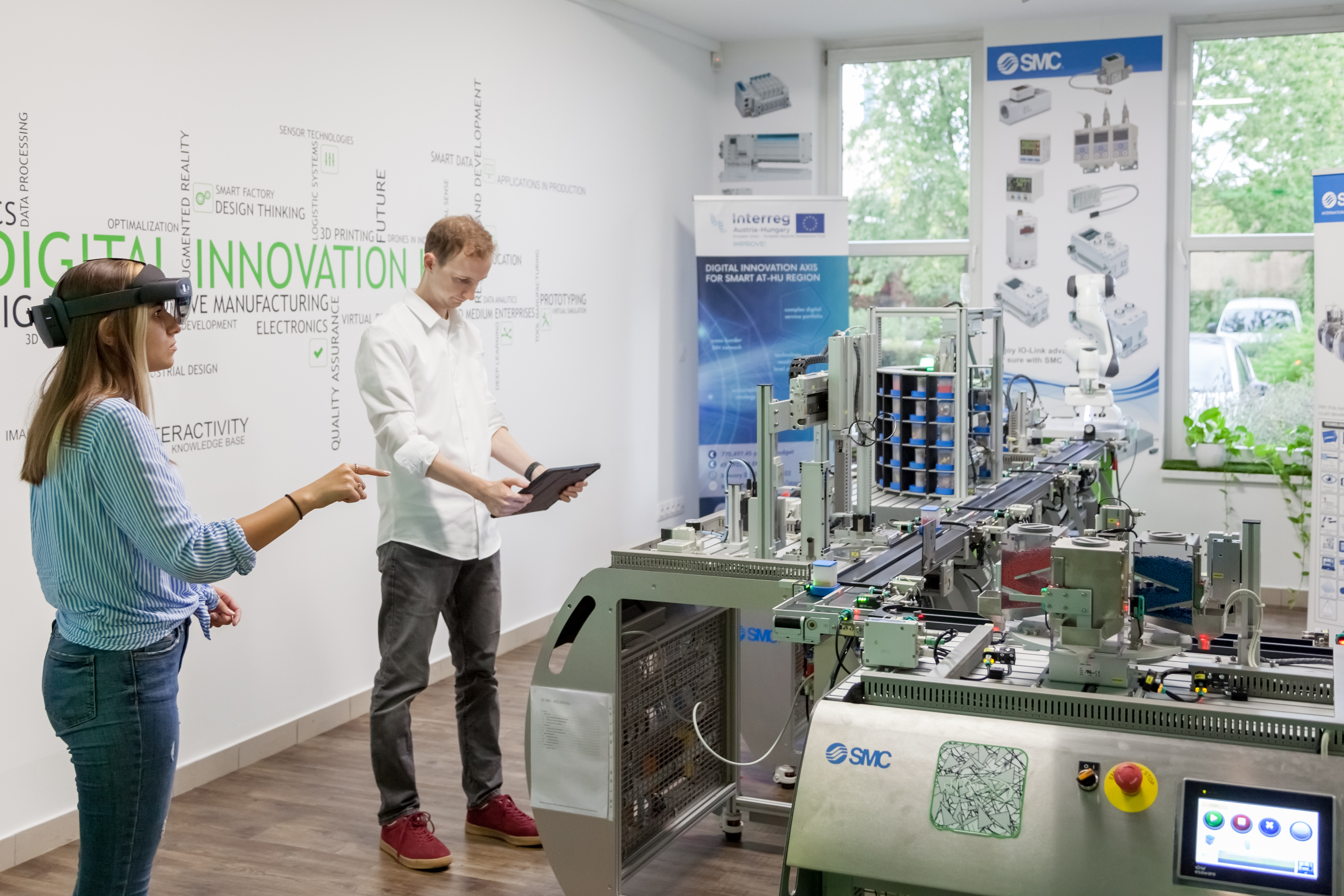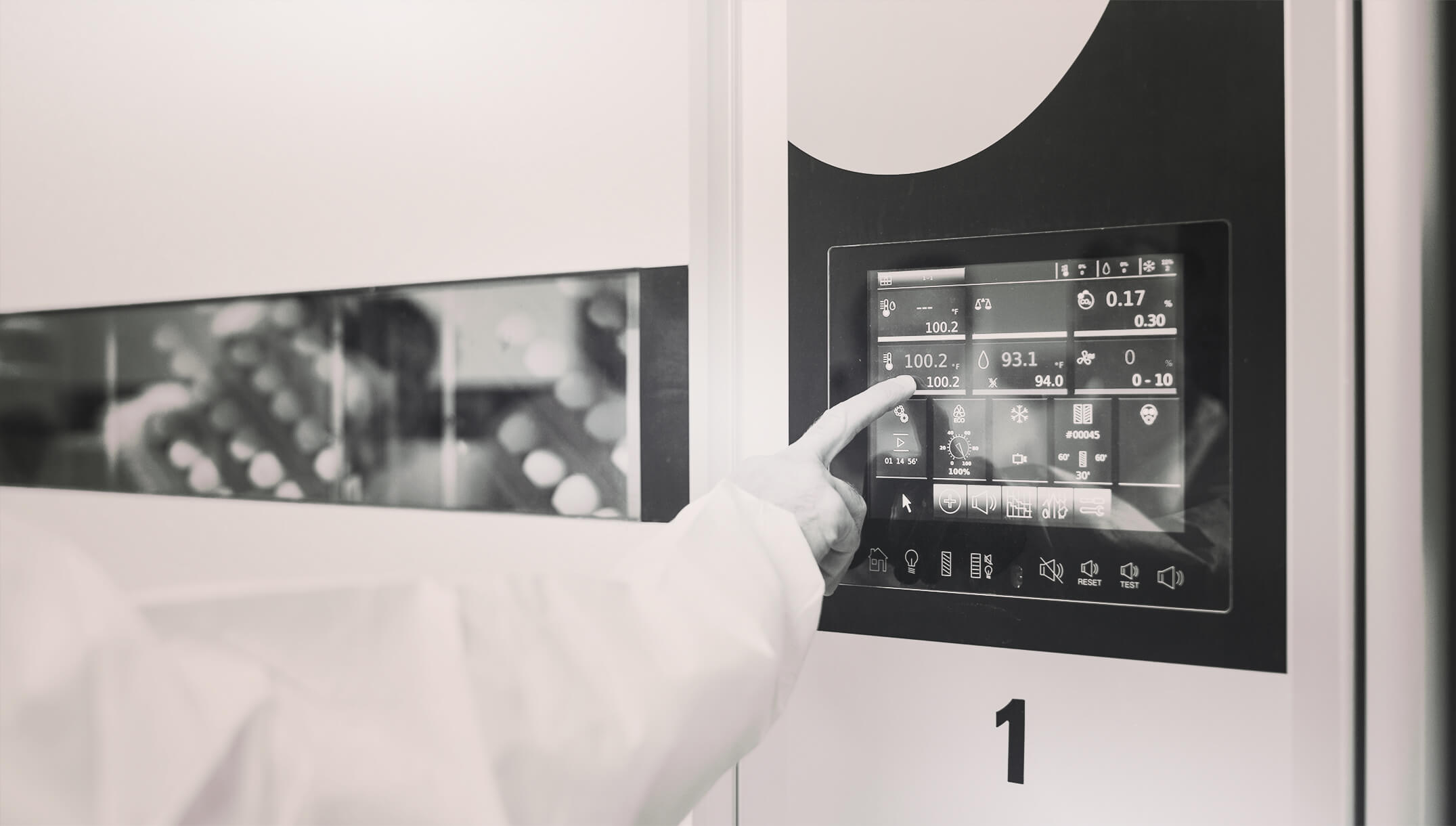Unique development possibilities of a smart production line

The smart production line is a great opportunity to present and teach industry 4.0 solutions. In addition to the existing applications, our colleagues are working to expand the production line with newer and newer functions. Since its commissioning, developments such as real-time data display, production data analysis, additional AR functions, the mapping of a virtual counterpart of the factory during digital twin cloning or the use of machine vision for quality control have been implemented.
Among these developments, the application of machine vision in the production process is presented in detail:
For the SIF-400, Teaching and Learning smart factory unit the first station shows the canister and palette feeding. The system is automatically dispensing the pallets with RFID chips, and then places the canister on the pallet corresponding to the order associated with it in the MES (Manufacturing Execution System). The system is checking the position of the product in the given moment, only with the help of the RFID readers and optical sensors. At the second station of the Teaching and Learning factory, the small balls are being dispensed. The specific RFID is associated with a specific order, so the system is dispensing the requested quantity. The quantity is controlled by the system, using an electropneumatic cylinder. Without machine learning, the system is not checking whether a canister is in the correct orientation at the first module.
This may cause problems at the second module. As the video is showing, the canister fell off from the pallet, because of the wrong placement, so the system cannot dispense the small balls properly. If the canister was there, but not in the right position, the balls would roll away in different ways. If the container fell off the pallet due to incorrect placement so the system cannot dispense the small balls properly. If the canister was there, but not in the right position, the balls would roll away in different ways. The problem was solved using Python programming language in the Jupyter Notebook environment. The teaching process is done with images, especially with cropped images in order to provide better result. The teaching process has repeated 10 times. As a result, the recognition of the defective products proved to be 100% accurate. During the validation process, the algorithm also creates heat maps, which can be also checked manually. During the manual check, in case of incorrect detection, it is possible to overwrite the tag associated with the image. Following the teaching process the finalised model can be launched at any time. In the evaluation process there is no need to re-write hundreds of lines of a new code.
When the product arrives, the camera takes a picture of the product, uploads it to the FTP server, where a script detects that a new picture has arrived and evaluates it. If the product is appropriate, the system lets the product go to the next station. In case, based on the evaluation, the product is not appropriate, the product will not be released to the next station.
The importance of development in the quality assurance system of the production process is a useful aid for increasing efficiency.



